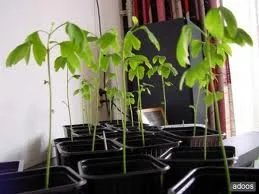 |
| More details http://jkmpic.blogspot.com |
The Jammu and Kashmir Medicinal Plants Introduction Centre-JKMPIC, is a pioneer institution to start cultivation of important indigenous medicinal plants and introduce many from other parts of the world. A preliminary study on cultivation of medicinal plants in Jammu and Kashmir was from this institution. Subsequently lot of work on cultivation and improvement was done on selected plants by different scientists and a consolidated account on cultivation and utilization of these plants was published (Sheikh GULZAAR, 2002 & 2007).
Availability of Seed/Planting material for research purpose only
(The following seeds and planting material is available for distribution/purchase for Research institutions, universities, associations and NGOs)
A
B
D
E
F
G
H
I
J
K
L
M
N
O
P
Q
R
S
T
V
W
Z
ABOUT OUR SEEDS : The Jammu and Kashmir Medicinal Plants Introduction Centre-JKMPIC specialises in seeds and plants that are the backbone of organic and permaculture systems. These include a wide range of open-pollinated, heirloom medicinal, fruit, herbal, vegetable seeds, rare edibles, living mulches, green manures and insectary plants for beneficial insects.
SEED QUALITY : We specialise in high quality seed with a guaranteed viability and purity and so we appreciate very much when gardeners let us if know they have an occasional problem with seed germination. This allows us to further improve our growing information and triggers additional germination testing to pinpoint any problems. Germination testing is carried out on a regular basis to check that the viability of seed is being maintained throughout the year.
OPEN POLLINATED SEEDS/Non-hybrid : Our seeds are nearly all open-pollinated and so are able to be grown again from seed you save yourself. Open-pollinated seeds are genetically diverse treasures that have been passed on from generation to generation. When you buy and plant open-pollinated seeds you are helping to protect this valuable resource for the future.
SEED SAVING
Saving open-pollinated (OP) seeds protects our global food heritage.Growing open pollinated seeds and saving some for next year's crop is a practical and economical option for home gardeners.
HEIRLOOM SEEDS
Most of our open-pollinated seeds are also considered heirloom or heritage seed. These are herb, flower and vegetable varieties that were bred and handed down by generations of gardeners and farmers. These varieties have stood the test of time, gardeners have saved them year after year because they were recognised for their superior qualities such as great flavour, good yield or disease resistance.
SEED PACKING : Our seeds are packed in simple plain paper, 90 mm x 145 mm, re-sealable packets with an inner cliplock plastic bag that is also resealable. Our intention is to avoid as much as possible glossy paper and full-colour printing due to its greater environmental impact. The paper packets can be composted. The inner cliplock bag helps greatly to maintain the seed's viability as it resists moisture far better than just a paper packet alone. Each Packet contains 50-100 seeds.
GROWING INFORMATION : Seed packets are printed with detailed growing information to help you with successful seed raising. In addition a free leaflet Successful Seed Raising Guide is provided with each seed purchase.
SEED TREATMENT : Please be aware that much of the seed retailed in South Asia is chemically treated with fungicides. The JK Medicinal Plants Introduction Centre does not use chemical treatments, our organic solution to weevils is diatomaceous earth, the grey, powdery coating on some of our seeds. Sometimes a hot water seed treatment is worthwhile if you have been having persistent disease problems.
Effective 01/02/2012 / Due to the volatility of shortages in the seed markets, Prices can change on a semi daily bases. Please place your order we will notify you of higher or lower prices on your purchase date.
For more details:-
Sheikh GULZAAR
Head
The JK Medicinal Plants Introduction Centre
POB: 667 GPO Srinagar SGR JK 190001
R&D division : Sonamarag (Kashmir)
Ph: (Resi) 01933-223705
Mob: 09858986794
e-mail: jkmpic@gmail.com





